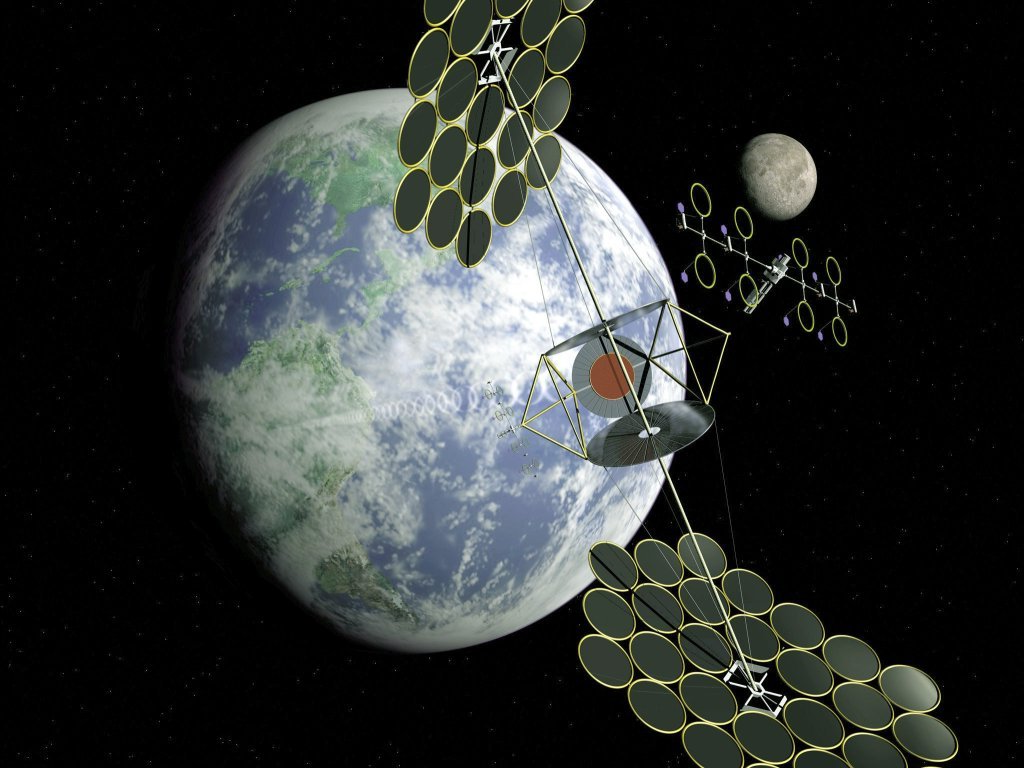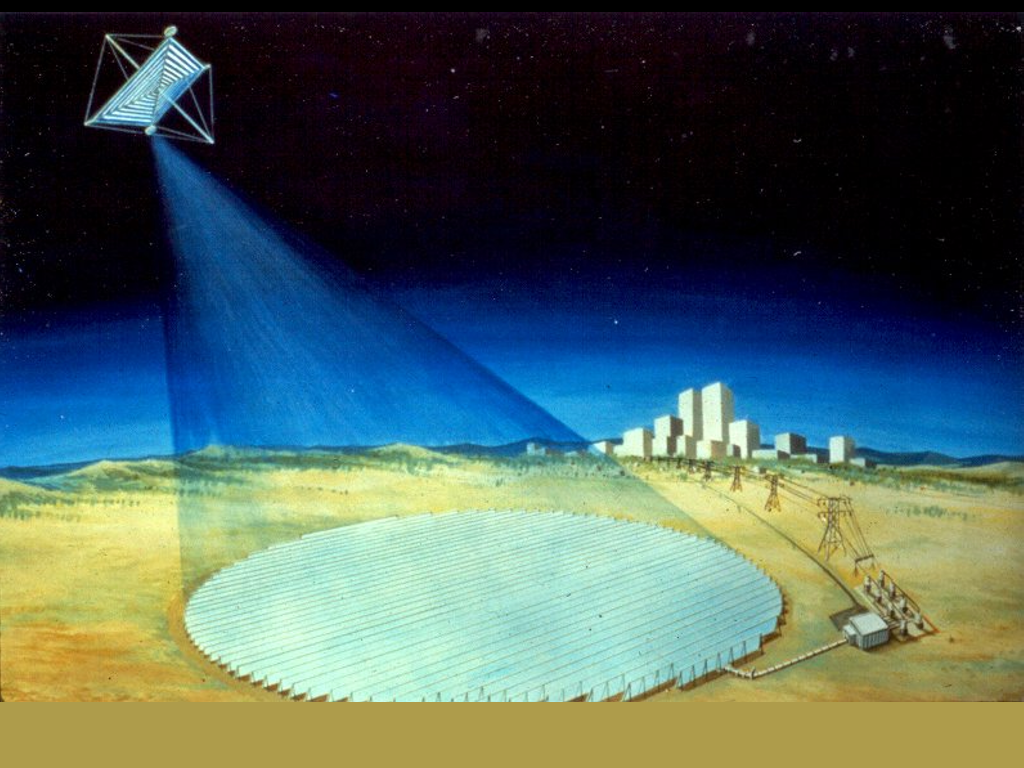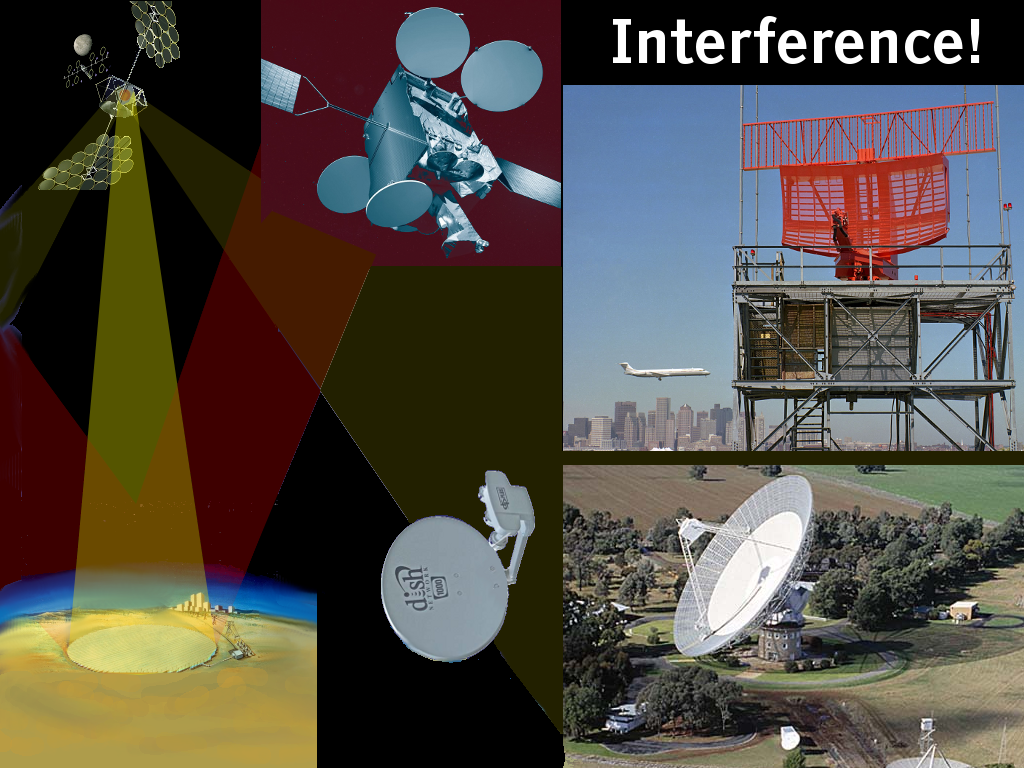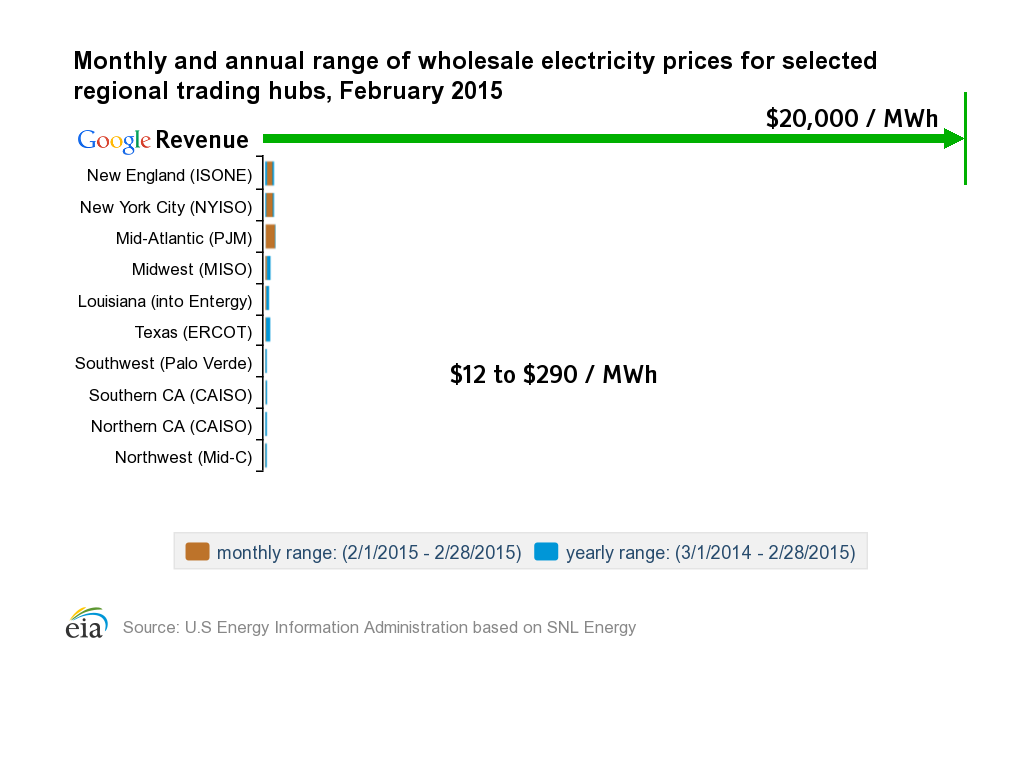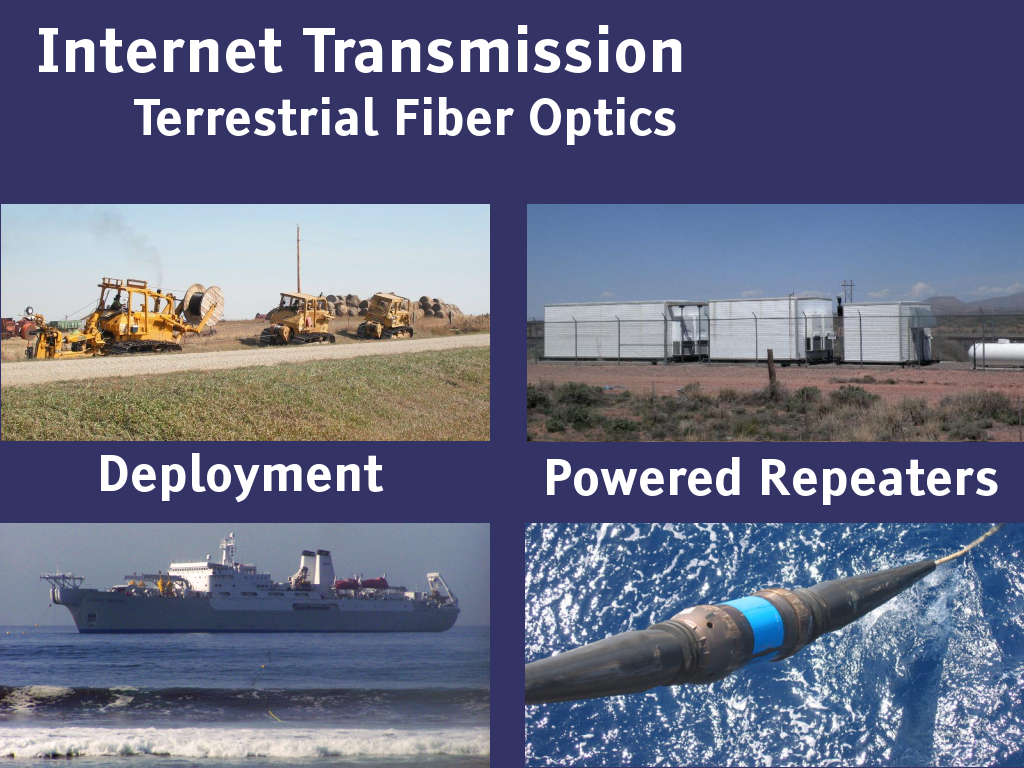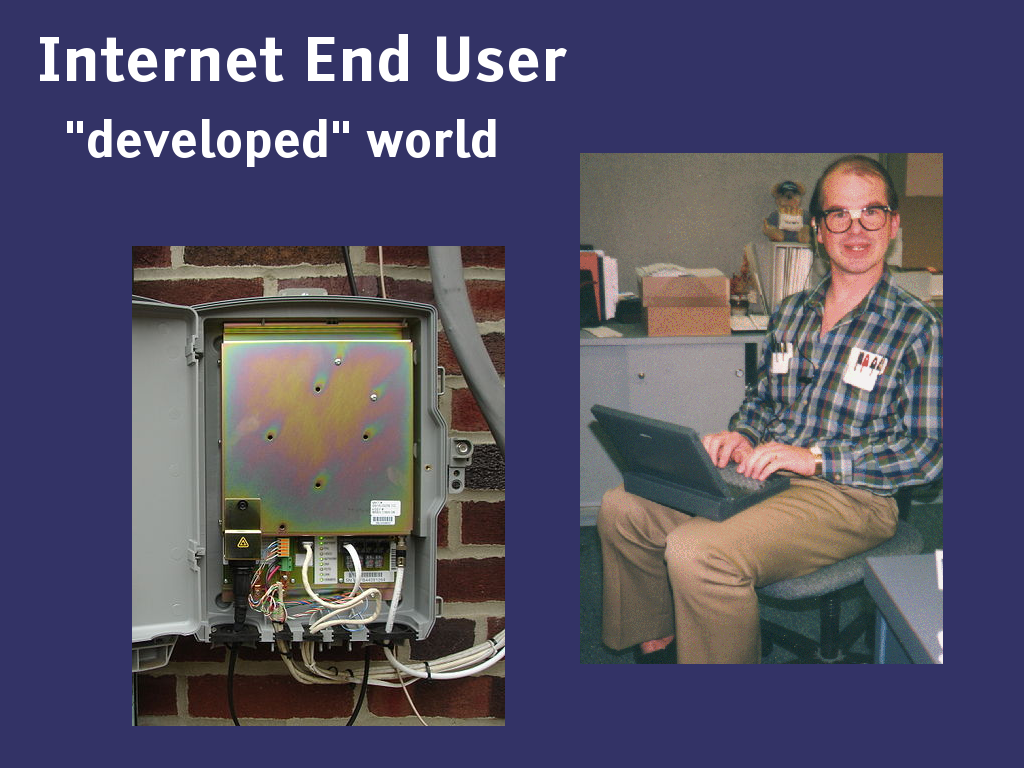|
Size: 5354
Comment:
|
Size: 6432
Comment:
|
| Deletions are marked like this. | Additions are marked like this. |
| Line 9: | Line 9: |
| Space power faces similar transportation difficulties, and similar solutions. Transforming space power into high value products before shipment reduces costs and increases value. Data center computation is very expensive and energy hungry. Google consumes 300 MW; estimating they pay $80/MWhr wholesale rates on average worldwide (with spot prices varying wildly around that average), they pay more than $200 M/year for electricity, which Google transformed into information and advertising revenues of $33 B in 2011. Some adwords earning more than $50 per clickthrough. |
Space power faces similar transportation difficulties, and similar solutions. Transforming space power into high value products before shipment reduces costs and increases value. Data center computation is very expensive and energy hungry. Google consumes hundreds of megawatts of electricity to produce information and advertising revenues of $33 B in 2011. Some adwords earn more than $50 per clickthrough. || {{attachment:google.png||width=450}} || This is the Google data center in The Dalles, Oregon. It consumes megawatts of electric power. All that electricity ends up in these coolers on the roof, after passing through the machines inside. || || {{attachment:EIAG1.png||width=450}} || A pioneering company like Google is very profitable because they make a LOT of money with that electricity. Google sells 20 thousand dollars worth of services for every megawatt hour they consume. || || {{attachment:EIAG3.png||width=450}} || Let's rescale the last graph so that we can see 20,000 on it. The markup ranges from 70 to 17 hundred, enough to attract most smart pioneers. However, like the pioneers, Google struggles to deliver their product to their worldwide customers. || || {{attachment:fiber.png||width=450}} || After the data leaves the data center, it travels over land and under water on fiber optic cables. Every 50 kilometers, the signal is cleaned up with repeaters, consuming more high reliability electrical power. || || {{attachment:fiberuser.png||width=450}} || Finally, the internet reaches the end user. In the developed world, there are 750 million broadband connections to endpoints with reliable electricity. || |
Send Bits, Not Watts
In 1974, Peter Glaser published "Feasibility study of a satellite solar power station", NASA CR-2357 . He and his coauthors imagined huge structures in geosynchronous orbit capturing gigawatts of solar power and beaming it as microwaves to receivers on earth, 40 000 km away. Because of beamforming diffraction limits, both transmitting and receiving antennas must be enormous, kilometers across, comprising millions of heavy microwave components. |
|
space solar power satellite |
ground rectenna, converter, power line |
|
|
In 1974, GEO orbit was almost devoid of assets, and computers were big and slow and power hungry. Much has changed in four decades, but Space Based Solar Power is still wedded to the Glaser model, and still a speculation frozen in time, based on the assumption that we would grow ever bigger boosters evolving out of the Saturn V. |
|
|
|
Space power faces similar transportation difficulties, and similar solutions. Transforming space power into high value products before shipment reduces costs and increases value. Data center computation is very expensive and energy hungry. Google consumes hundreds of megawatts of electricity to produce information and advertising revenues of $33 B in 2011. Some adwords earn more than $50 per clickthrough.
|| 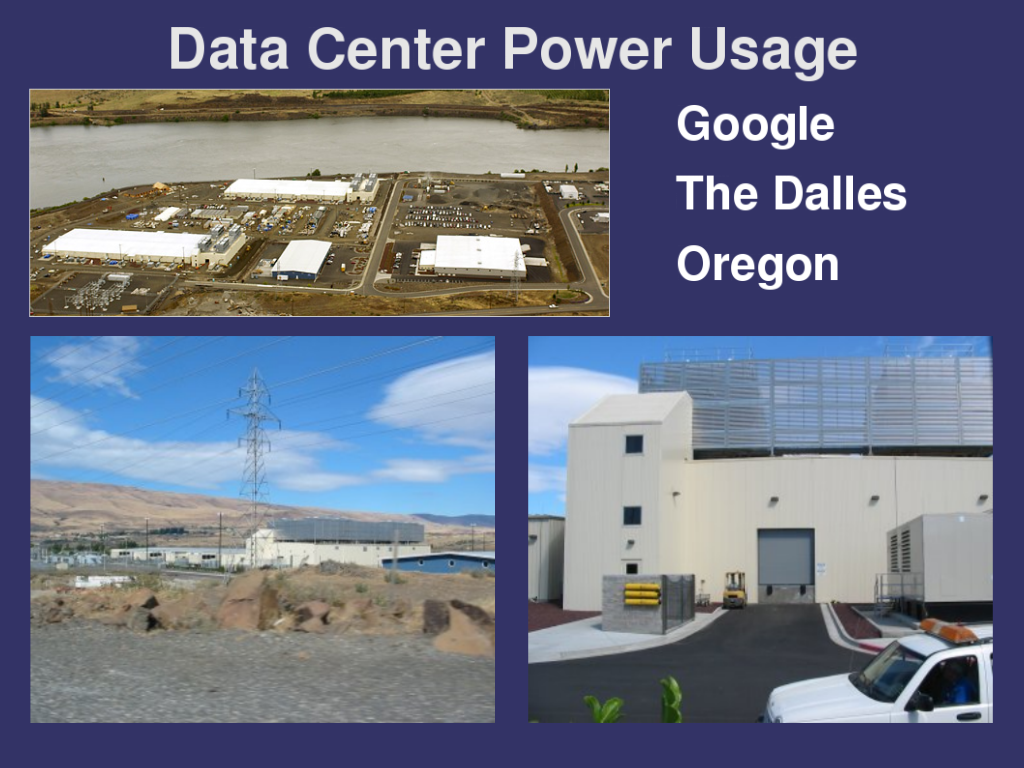 || This is the Google data center in The Dalles, Oregon. It consumes megawatts of electric power. All that electricity ends up in these coolers on the roof, after passing through the machines inside. ||
|| This is the Google data center in The Dalles, Oregon. It consumes megawatts of electric power. All that electricity ends up in these coolers on the roof, after passing through the machines inside. ||
|
A pioneering company like Google is very profitable because they make a LOT of money with that electricity. Google sells 20 thousand dollars worth of services for every megawatt hour they consume. |
|
Let's rescale the last graph so that we can see 20,000 on it. The markup ranges from 70 to 17 hundred, enough to attract most smart pioneers. However, like the pioneers, Google struggles to deliver their product to their worldwide customers. |
|
After the data leaves the data center, it travels over land and under water on fiber optic cables. Every 50 kilometers, the signal is cleaned up with repeaters, consuming more high reliability electrical power. |
|
Finally, the internet reaches the end user. In the developed world, there are 750 million broadband connections to endpoints with reliable electricity. |
3 petabytes of information, at 1 electron volt per bit, is 4 millijoules of energy. Even if we move that with 1e-9 efficiency, that is one kilowatt hour of energy, worth less than 10 cents. A downloadable blueray movie is perhaps 45GB for $15 from Amazon in 2013, and 3PB is 67,000 such movies, a million dollars worth of information, sent for a dime.
Systems that convert space solar power into computation and transmit the results to earth, bypassing energy and capital intensive fiber networks, may prove cheaper to operate and to deploy, especially in regions without established high bandwidth infrastructure.
Transistors were 10 microns across in 1974; now they are close to 10 nanometers, and much thinner. The active silicon CPU surface in a Google data center weighs a few kilograms - launching it into space would add very little to its cost.
Space launch does cost way too much, perhaps $10,000/kg. The energy and materials cost is closer to $100/kg; launch costs too much because launch rates are too small to pay the salaries of the standing army that builds and launches rockets. But nobody, certainly not risk-adverse and conservative electric power companies, is going to pay $10K or even $100 per kilogram to put infrastructure in space to generate $100/kg-year revenues.
If we can increase the revenue per kilogram 100 or 1000 times, while scaling down systems on the ground and in the sky, we can justify rapidly growing space infrastructure even at current launch costs. If we can launch 4GW/year of data service at 2KW/kg (perhaps half of global data center growth), producing hundreds of billions of dollars of revenue, the competition for this new 2000 tonne/year launch market, 10x the size of the current market, will pay for the kind of launch system development and cost reduction that space enthusiasts have hoped for with space based solar power, while bringing internet connectivity to the world.
Insanity is doing the same thing over and over, and expecting a different result. Many of us have spent our lives scheming and dreaming to make space solar power happen. Perhaps it is time to take the red pill, and follow the money to our door to the future.

